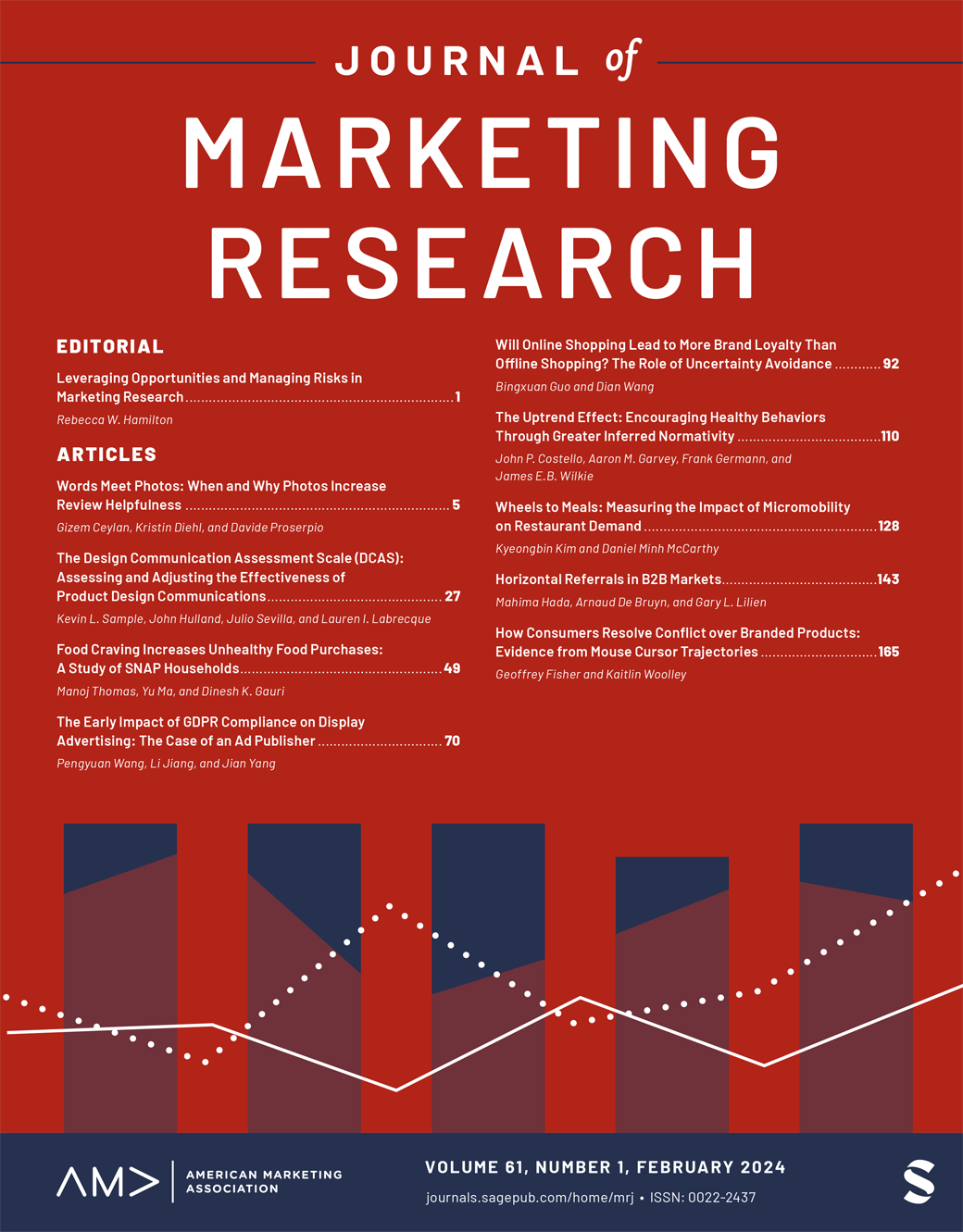公司生成内容对新电影发行的连锁反应
IF 5
1区 管理学
Q1 BUSINESS
引用次数: 1
摘要
营销人员经常创建社交媒体内容(即公司生成的内容;FGC),以激发人们对新电影的兴趣。因此,显然需要了解FGC对电影需求和相关用户生成内容(UGC)的影响的大小和异质性。作者使用公司通常可以获得的社交媒体(推特)数据,实证研究了FGC、UGC和销售之间的复杂互动。他们研究了FGC可能推动票房收入的两种潜在机制:(1)直接机制,即观看FGC的用户直接推动收入;(2)间接“连锁反应”,即FGC增加电影相关的UGC,从而推动消费。通过分析与159部电影相关的145502条公司生成和590万条用户生成的推特帖子,作者发现FGC对电影销售产生了积极而显著的影响,UGC对此进行了充分的调解,这支持了间接连锁反应推理。与公司账户的非追随者相比,公司账户追随者对FGC的印象主要推动了FGC对UGC的影响。此外,电影账户的FGC比演员和工作室的FGC更有效。公司定期发布带有特定电影标签的帖子比回复、转发和不带标签的帖子更有效。连锁反应的发现表明,电影高管应该专注于创造FGC,在新电影上映时引发追随者之间的对话。本文章由计算机程序翻译,如有差异,请以英文原文为准。
The Ripple Effect of Firm-Generated Content on New Movie Releases
Marketers frequently create social media content (i.e., firm-generated content; FGC) to ignite interest in new movies. Thus, there is a clear need to understand the magnitude and heterogeneity of the effect of FGC on movie demand and associated user-generated content (UGC). The authors empirically examine the complex interactions among FGC, UGC, and sales using social media (tweet) data that are normally available to firms. They investigate two potential mechanisms by which FGC may drive box office revenues: (1) a direct mechanism, such that users who see FGC directly drive revenue, and (2) an indirect “ripple effect,” by which FGC increases movie-related UGC, which then drives consumption. By analyzing 145,502 firm-generated and 5.9 million user-generated Twitter posts associated with 159 movies, the authors find a positive and significant effect of FGC on movie sales, which UGC fully mediates, which supports the indirect ripple effect reasoning. Impressions of FGC by followers of firm accounts, as opposed to nonfollowers of firm accounts, mainly drive the effect of FGC on UGC. In addition, FGC by movie accounts is more effective than that by actors and studios. Firms’ regular posts with a movie-specific hashtag are more effective than replies, retweets, and posts without the hashtag. The finding of the ripple effect suggests that movie executives should focus on creating FGC that sparks conversations among followers when new movies are released.
求助全文
通过发布文献求助,成功后即可免费获取论文全文。
去求助
来源期刊

Journal of Marketing Research
BUSINESS-
CiteScore
10.30
自引率
6.60%
发文量
79
期刊介绍:
JMR is written for those academics and practitioners of marketing research who need to be in the forefront of the profession and in possession of the industry"s cutting-edge information. JMR publishes articles representing the entire spectrum of research in marketing. The editorial content is peer-reviewed by an expert panel of leading academics. Articles address the concepts, methods, and applications of marketing research that present new techniques for solving marketing problems; contribute to marketing knowledge based on the use of experimental, descriptive, or analytical techniques; and review and comment on the developments and concepts in related fields that have a bearing on the research industry and its practices.
 求助内容:
求助内容: 应助结果提醒方式:
应助结果提醒方式:


